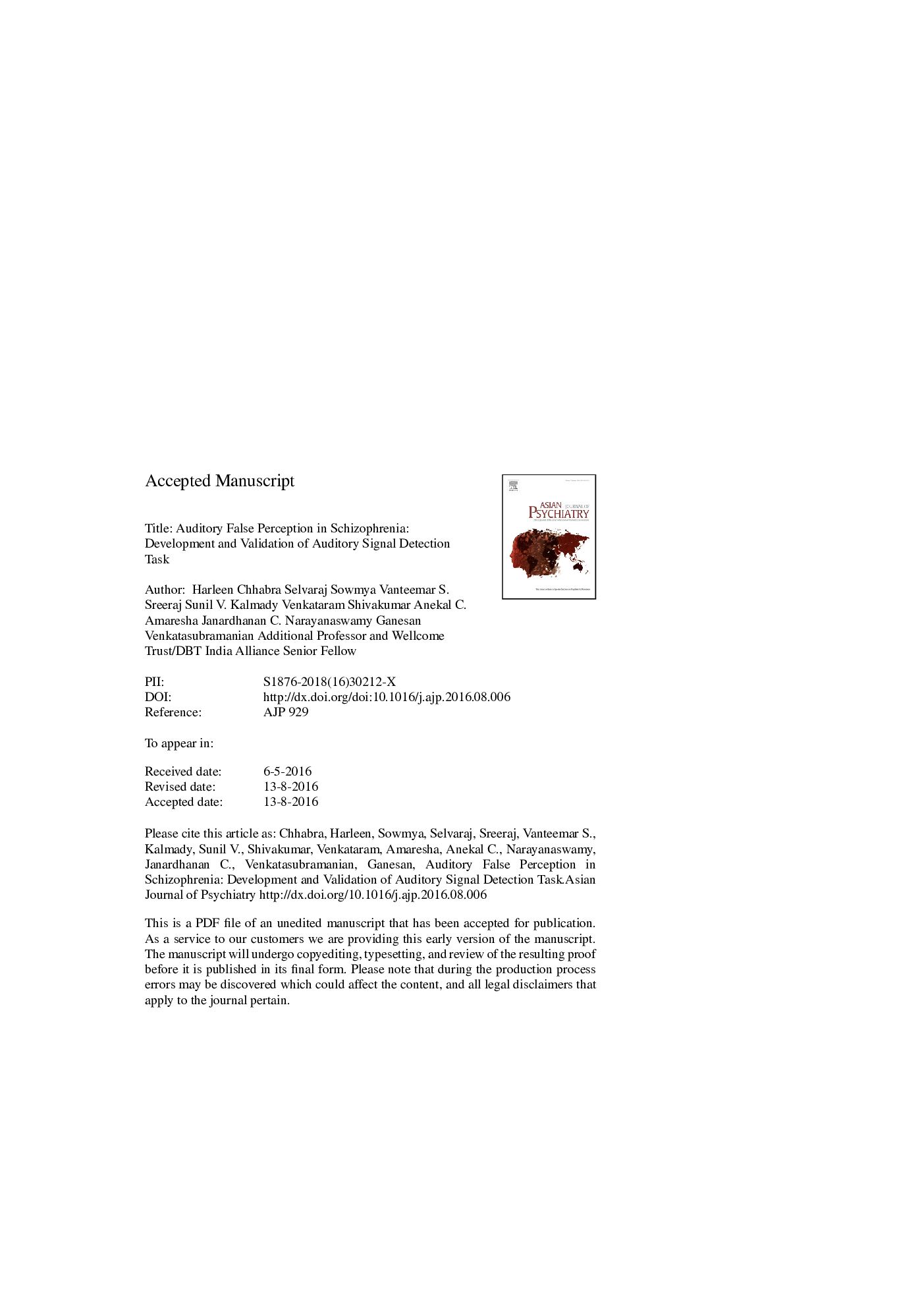| Article ID | Journal | Published Year | Pages | File Type |
|---|---|---|---|---|
| 4929903 | Asian Journal of Psychiatry | 2016 | 18 Pages |
Abstract
Auditory hallucinations constitute an important symptom component in 70-80% of schizophrenia patients. These hallucinations are proposed to occur due to an imbalance between perceptual expectation and external input, resulting in attachment of meaning to abstract noises; signal detection theory has been proposed to explain these phenomena. In this study, we describe the development of an auditory signal detection task using a carefully chosen set of English words that could be tested successfully in schizophrenia patients coming from varying linguistic, cultural and social backgrounds. Schizophrenia patients with significant auditory hallucinations (N = 15) and healthy controls (N = 15) performed the auditory signal detection task wherein they were instructed to differentiate between a 5-s burst of plain white noise and voiced-noise. The analysis showed that false alarms (p = 0.02), discriminability index (p = 0.001) and decision bias (p = 0.004) were significantly different between the two groups. There was a significant negative correlation between false alarm rate and decision bias. These findings extend further support for impaired perceptual expectation system in schizophrenia patients.
Related Topics
Life Sciences
Neuroscience
Neuroscience (General)
Authors
Harleen Chhabra, Selvaraj Sowmya, Vanteemar S. Sreeraj, Sunil V. Kalmady, Venkataram Shivakumar, Anekal C. Amaresha, Janardhanan C. Narayanaswamy, Ganesan (Additional Professor and Wellcome Trust/DBT India Alliance Senior Fellow),
